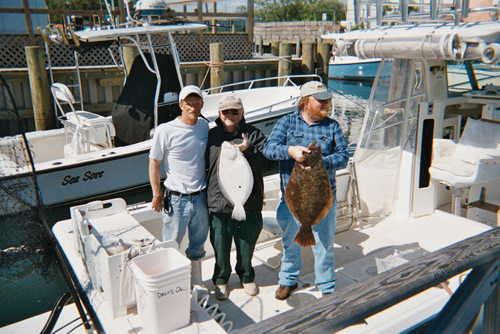Outdoors: New fishing regulations seen as mostly positive

What a difference a week makes! Before May 1, if you looked at the 2014 summer flounder (“fluke”) regulations, you saw a minimum size limit of 19 inches, a four-fish bag limit, and a season that ran from May 1 through Sept. 29. If you looked at the situation after May 1, you were surprised to see the bag limit had been extended to five fish, the minimum size limit dropped an inch to 18 inches, and the season chopped at both ends, running from May 17 to Sept. 21. What happened?
According to Fred Golofaro, senior editor of Fisherman, in an effort to get consistent size and possession limits in New York, New Jersey, and Connecticut and properly manage the overall take (New York was 15 percent over its recreational quota in 2013) the region was limited to 45 days of fishing in the months of May and June, 2014, and new regulations were the result. For most, the changes seemed overwhelmingly positive. Dropping the limiting size to 18 inches means adding a large younger year class to the catch, while a five-fish-per-day limit takes into account the abundance of that class. Moreover, by filling out a daily tally with smaller fluke, anglers should theoretically reduce their kill of prime spawners, the fish you really want in your population.
But there was an aspect of the new regs that caused considerable concern on the East End. Because of the lack of other species in the early season, fluke have become numero uno, and the earlier you open the season, the better the prospects for our charters and party boats. Over the last decade, North Fork skippers have learned to love the very first weeks of May when spring fluke, especially the big girls of 10 pounds and more, start dining on Peconic squid. Back 30 years when we had our April winter flounder (“flounder”) and May weakfish, fluke were not all that interesting, almost a by-catch until sometime in June. But with May fluking now the only show in town except for scup (“porgies”), a mid-month fluke opener was economically problematic. We won’t have conversations with local captains for another week or so when we start writing fishing reports, but we did chat with a friend who ranks as a party boat guru, Tom Schlichter of Southold, just three days after the May 17 fluke opener. Schlichter thought the delayed opening might not have been so bad this season because the water has been so cold. In fact, at mid-month Peconic Bay had a 55-degree surface reading, prime for flounder, but quite cold for fluke. The squid run had arrived on time, however, and the initial catches of fluke, big fluke, were as good as usual. Schlichter said the fish were “stacked” and told us that Dave Brennan’s Peconic Star had pools of 10 and seven pounds on the first two days. Schlichter himself had two keepers to five pounds on his first two drops!
The lesson here is that anglers may have to get used to the fine-tuning of regulations at the last minute. Schlichter hopes we’ve turned a corner. He believes that pressure from informed political leaders like Sen. Charles Schumer of New York has been helpful in pressuring management to make use of the very latest data. For all those using the resource, this is certainly a favorable outcome.
Contrast the lack of management years ago. With scant data from angler surveys and no angler registrations, it was impossible to assemble scientifically useful data on, say, winter flounder. To the uninitiated, it looked like the flounder runs would go on forever. The enormous recreational catch seemed to make no dent in the population. But when commercial fishers switched over to “blackbacks” from some of the most desirable flatfish (e.g. yellowfin, flounder and turbot) after stocks of those got depleted in the late 1980s, the regulatory hammer should have come down. It didn’t, and the great flounder runs of the Peconics are now history. Similarly, the boom and bust nature of the weakfish cycle provided the chance to manage weakfish stocks when the Peconic group of spring spawners peaked in the late 1970s. Unfortunately, this occurred just before the Magnuson Act was enacted, and again, nothing was done. Coastal fishers pigged out on spawning weakfish until the stocks crashed. Today, the northern weakfish provides cover pictures on fishing magazines, and that’s about all. With a one-fish-per-day, 16-inch legal limit on the books, who but a nostalgia freak targets weakfish?
Nobody among the fisheries’ scientists and managers expects perfect responses, and clashing interests like commercial and recreational fishers will always compete for larger and larger pieces of a finite pie. But the main thing for the fluke fishery is to get it right, and also to continue what seems to be a success.





